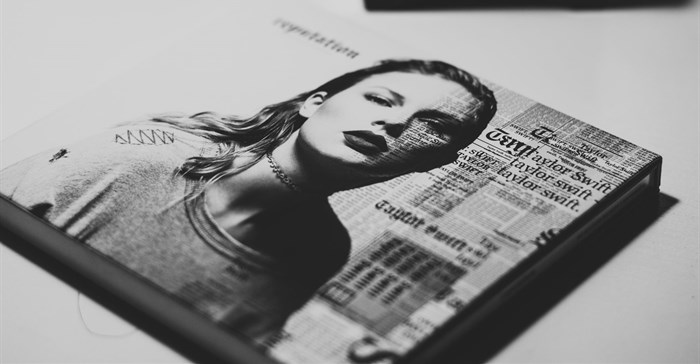In the era of artificial intelligence (AI), deepfakes, and rampant intellectual property (IP) theft, navigating the sourcing and publication of images has become a minefield for journalists and communicators. How can they tread this delicate path without risking legal repercussions?
It’s a tricky tightrope, but if you follow some basic common-sense copyright guidelines, it’s possible to navigate these crocodile-infested waters with a degree of safety.
There are many grey areas in local and global copyright enforcement, not least because of the threats posed by the rise of AI.
Little clarity is offered by South Africa’s Copyright Amendment Bill, which has yet to be promulgated despite having been in the works for several years.
However, the broad fact remains, whatever you create (even if you don’t formally copyright it) remains your IP, and it’s morally, ethically and often legally wrong for someone else to use it without compensation, permission or, at the very least, attribution.
So, what do you do when you need to illustrate an article, a social media post, a presentation or a pitch to give it some visual zing?
Basically, be informed, be careful and be a decent human being.
Judith Middleton 5 Apr 2024
10 hacks to navigate the murky world of image copyright
- Original is best
It’s always worthwhile investing time and effort into taking your own photos and designing your own artwork. You can build up your own image library and develop a visual identity for your own brand and, in the case of agencies, for your clients. You don’t need to ask anyone for permission to use your images, they don’t look generic and they’re free to use and alter as you wish. Smiles all around.
- Royalty-free image libraries are your friend
Free stock photos can be a lifesaver, especially if you aren’t able to take your own. Among the best sites for downloading free images are Unsplash, Pixabay and Pexels.
The only downside with some of these international sites is that their pictures may lack diversity and representivity. Find more royalty-free image sites here.
- Paid-for stock images to make your content pop
Need a particular image for a client or customer but tearing your hair out trying to find one? Consider buying an image and supporting a creator.
If you have an Adobe account and access to Adobe Stock Images, that’s a great place to start. You’ll be assured of beautiful, high-quality, verified images, illustrations and vectors that can be used subject to certain licence conditions.
Heili Potgieter and Dina Biagio 12 Mar 2024
- Flick on the Flickr switch
Flickr is one of the world’s largest photo repositories, with tens of billions of images (mostly photographs) shared online. Depending on each Flickr account’s Creative Commons licensing terms, you may be able to freely use and publish images – even commercially – with the proper attribution. Flow Communications’ Flickr page, for example, offers over 50,000 images and videos that are licensed through Creative Commons, free for anyone to use, as long as they are attributed.
- Creative Commons and Wikimedia
Creative Commons is a marketplace or “commons” that offers free access to copyrighted content such as photos. As with Flickr, you need to check each image’s licence conditions and attribution requirements – you may not be able to use it for commercial purposes, such as to market a product, for example, but may be able to use it as an illustration in a newsletter. Images on Wikimedia Commons, a division of Wikipedia, are governed by Creative Commons licences and may also be used for free.
Another way to find images you can use for free with attribution is to visit Google Images and perform an image search; then click on “tools” from the dropdown menu, then “usage rights” and “Creative Commons licences”.
- Fair use and fair dealing
The principle of “fair use” (or, sometimes, “fair dealing”) means that you can use copyrighted material for certain “reasonable” purposes without obtaining permission or paying royalties. Broadly and within reason, you can use copyrighted images for private research or study purposes, review or criticism, reporting on current events as well as “by way of illustration” for teaching purposes. Significantly altering an image so that it is considered a “transformative” work that no longer resembles the original could also be deemed fair use – but tread with caution.
- Public domain
Images in the public domain are considered copyright-free as they do not belong to anyone – they belong to the public, often because their copyright has expired (this period varies from country to country). Leonardo da Vinci’s Mona Lisa, for example, is in the public domain because the artist died some 600 years ago, and so is the original iteration of Mickey Mouse in Steamboat Willie. But be careful – certain photos of such works or characters may still be subject to copyright.
- Attribute, link and give credit where it’s due
No, mere attribution is not a get-out-of-jail-free card to get around stealing images. But if you can legitimately use a picture (such as with Creative Commons and Flickr content), do credit the author and the source, providing the necessary links. It’s also good practice to credit free stock images – it shows professionalism and respect for original work. Exercise extreme caution when sharing images from social media – these could be copyright-protected.
- AI and the danger of deepfakes
Did you know that for an image to be copyrighted, it must have been created by a human? That’s right – AI-generated content is not protected by copyright law, even if it was created using human prompts. This is an evolving field, though. Then there are deepfakes: digitally manipulated images or videos created by AI deep learning – Taylor Swift, Vladimir Putin, Tom Cruise and Joe Biden are among those whose likenesses have been “cloned”.
Track the provenance of an image by using Google reverse image search or Google Lens (go to Google, select Images, and upload your picture), or simply by observing finer details such as hair and fingers, which AI is currently not very good at replicating.
Jorge Palacios, Invibes Advertising 5 Sep 2023
- When it doubt, leave it out
if question marks are hanging over an image – or even a post that you want to share – err on the side of caution and don’t use it. Don’t publish images of minor children unless their parents or guardians have given permission.
Bottom line
Even with seemingly free-to-use images, check the licence before you use them. A good rule of thumb is not to download and use images you find randomly on Google unless you can trace its provenance and/or its usage licence.
The emergence of convincing-looking deepfakes underscores that seeing is not always believing – unless you believe the Pope really would wear a puffer jacket.
Copyright infringement is a serious offence that could land you with a fine – or, at the very least, egg on your face.
So, if a highly desirable image’s ownership status is unknown, assume that it is copyrighted and, in the immortal words of Frozen’s Elsa, "let it go".
Disclaimer: This is merely a guide to basic image copyright issues and does not constitute legal advice. For an expert opinion, please consult a copyright lawyer.




































